Delta w końcu wystartowała 11.12. o 01:09 z Cape Canaveral wystrzelona została RN Delta-4H, która wyniosła na orbitę geostacjonarną w ramach misji NRO L-44 satelitę zwiadu elektronicznego Orion-10, który otrzymał nazwę oficjalną USA-311.
http://lk.astronautilus.pl/n201201.htm#09





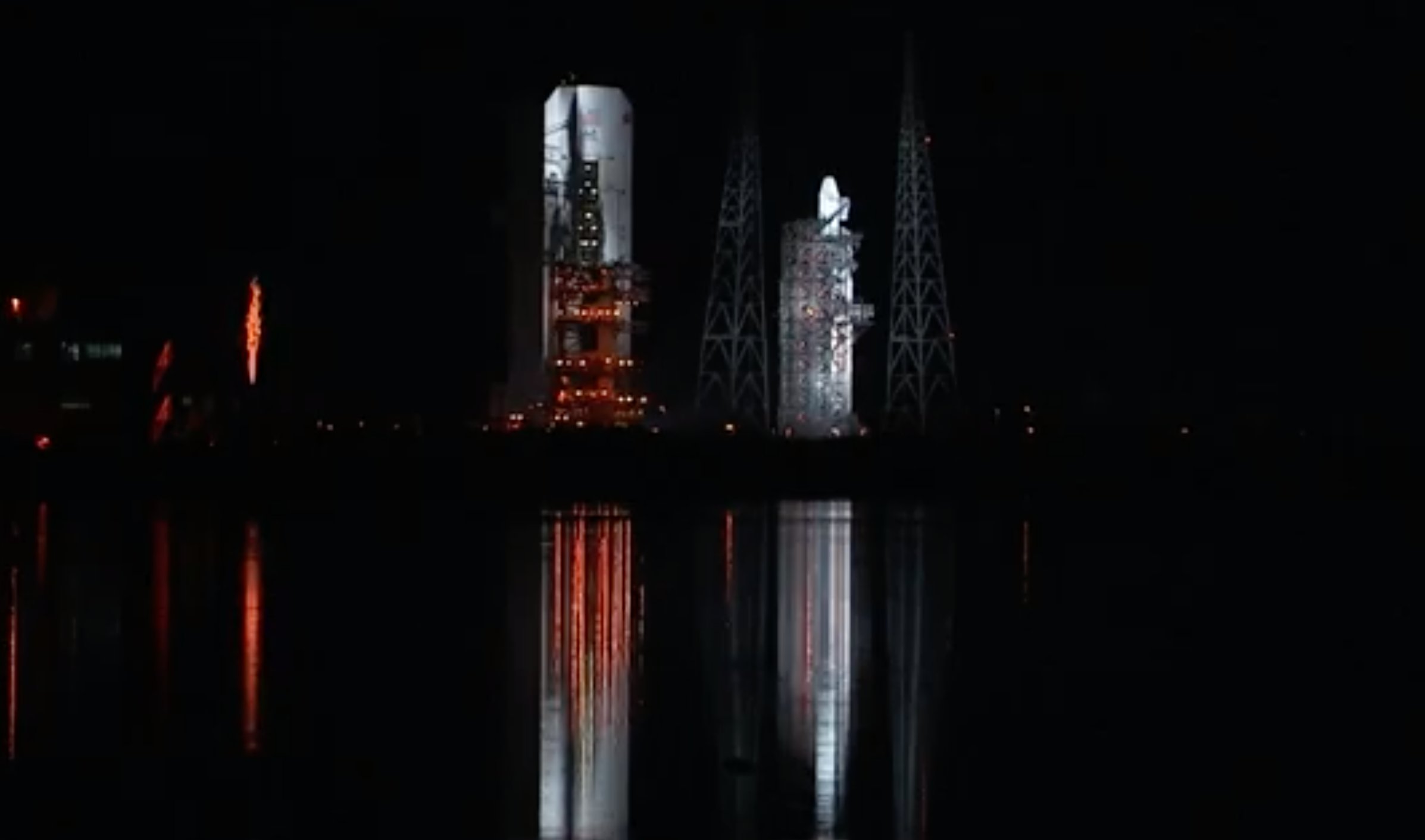
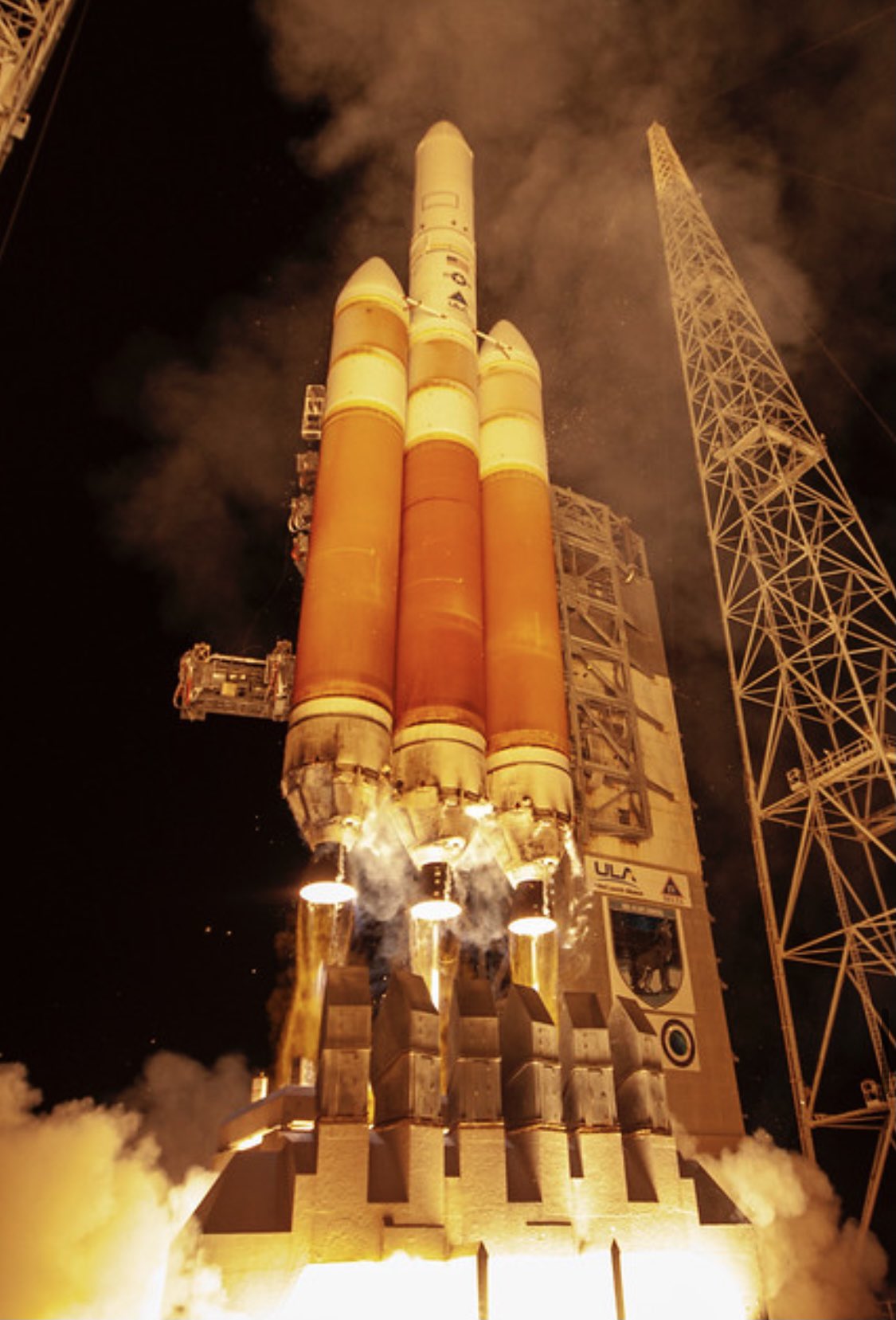
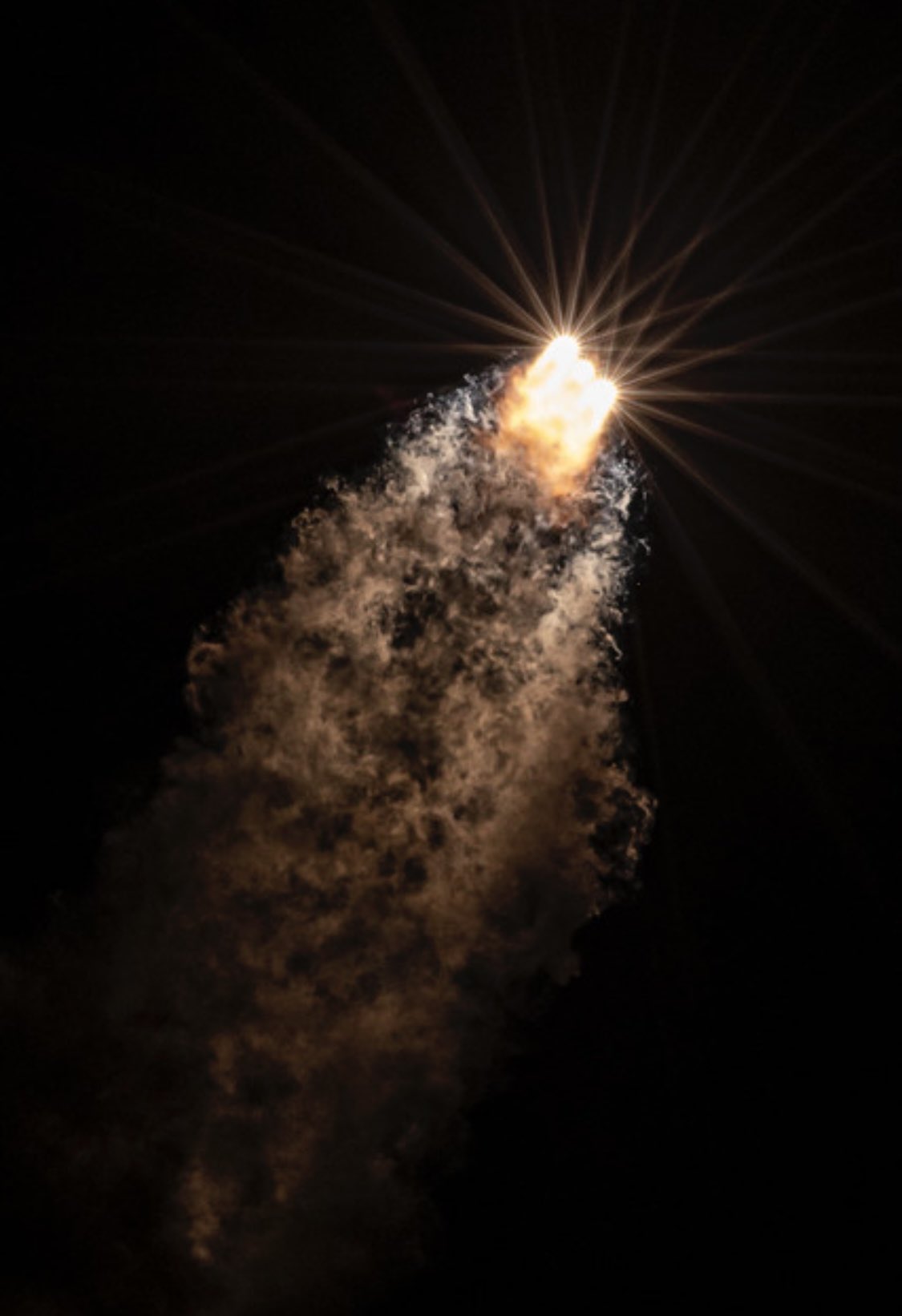 Delta IV Heavy launches NROL-44
Delta IV Heavy launches NROL-449708 wyświetleń•11 gru 2020
Here are some statistics on today's mission:385th Delta rocket launch since 1960
41st Delta 4 rocket mission since 2002
12th Delta 4-Heavy configuration to fly
63rd, 64th and 65th main engine from RS-68 family launched
21st, 22nd and 23rd RS-68A main engine flown
33rd Delta 4 launch from Cape Canaveral Air Force Station
9th Delta 4-Heavy launch from Cape Canaveral Air Force Station
13th Delta 4 launch for the National Reconnaissance Office
8th Delta 4-Heavy launch for the National Reconnaissance Office
142nd United Launch Alliance mission since the company's formation in 2006
6th ULA launch this year
1st launch of the Delta family in 2020
28th orbital launch from Cape Canaveral in 2020
https://spaceflightnow.com/2020/12/10/delta-385-nrol-44-mission-status-center-2/ULA launches long-delayed NRO mission aboard Delta 4 Heavy rocketby Sandra Erwin — December 10, 2020
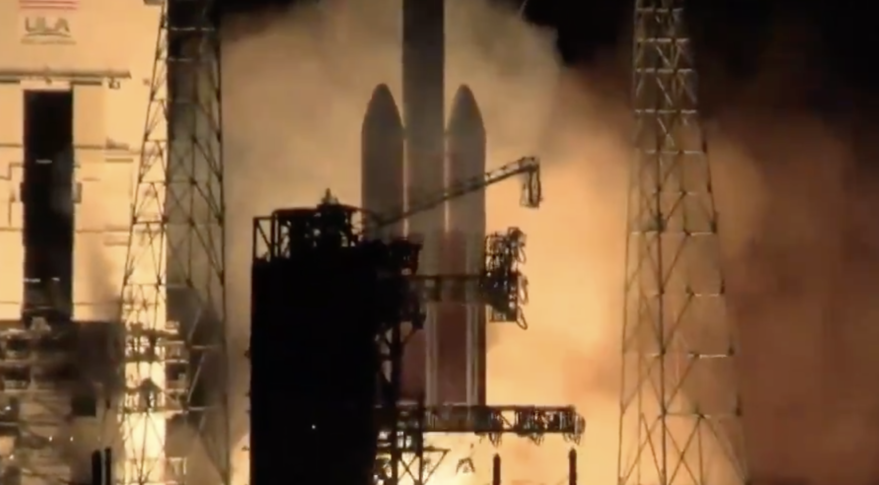 A United Launch Alliance Delta 4 Heavy rocket on Dec. 10 at 8:09 p.m. Eastern launched NROL-44 from Space Launch Complex-37 at Cape Canaveral Space Force Station in Florida. Credit: ULAThe mission named NROL-44 finally got off the pad following three months of delays and scrubs.WASHINGTON — A National Reconnaissance Office classified satellite flew to orbit Dec. 10 aboard a United Launch Alliance Delta 4 Heavy rocket.
A United Launch Alliance Delta 4 Heavy rocket on Dec. 10 at 8:09 p.m. Eastern launched NROL-44 from Space Launch Complex-37 at Cape Canaveral Space Force Station in Florida. Credit: ULAThe mission named NROL-44 finally got off the pad following three months of delays and scrubs.WASHINGTON — A National Reconnaissance Office classified satellite flew to orbit Dec. 10 aboard a United Launch Alliance Delta 4 Heavy rocket.
The vehicle lifted off at 8:09 p.m. Eastern from Space Launch Complex-37 at Cape Canaveral Space Force Station in Florida.
The webcast of the flight ended approximately seven minutes into the flight. The U.S. Space Force early Friday confirmed the launch was successful.
The mission named NROL-44 finally got off the pad following three months of delays and scrubs. including a pair of last-minute aborts and other delays caused by problems with the launch pad equipment.
The triple-core Delta 4 Heavy is powered by three Aerojet Rocketdyne RS-68A liquid hydrogen/liquid oxygen engines. The second stage is powered by an Aerojet Rocketdyne RL10B-2 liquid hydrogen/liquid oxygen engine.
NROL-44, a geostationary signals intelligence satellite, was the 12th mission for the Delta 4 Heavy. It was ULA’s 142nd mission and the company’s 30th for the NRO.
Preparations for this launch started more than a year ago. The Delta 4 Heavy was rolled out to the pad in November 2019. The NROL-44 payload was delivered in July.
The Delta 4 Heavy is slated to be retired after launching four more NRO missions over the next few years. Two will be from Cape Canaveral and the other two from Vandenberg Air Force Base, California. https://spacenews.com/ula-launches-long-delayed-nro-mission-aboard-delta-4-heavy-rocket/ULA’s Delta 4-Heavy ready for another launch attempt after pad repairsDecember 9, 2020 Stephen Clark
 The Delta 4-Heavy rocket for the NROL-44 mission before a previous launch attempt. Credit: United Launch Alliancehttps://spaceflightnow.com/2020/12/09/ulas-delta-4-heavy-ready-for-another-launch-attempt-after-pad-repairs/Delta IV Heavy Launches Long-Delayed NROL-44 Mission
The Delta 4-Heavy rocket for the NROL-44 mission before a previous launch attempt. Credit: United Launch Alliancehttps://spaceflightnow.com/2020/12/09/ulas-delta-4-heavy-ready-for-another-launch-attempt-after-pad-repairs/Delta IV Heavy Launches Long-Delayed NROL-44 MissionBy Ben Evans, on December 10th, 2020
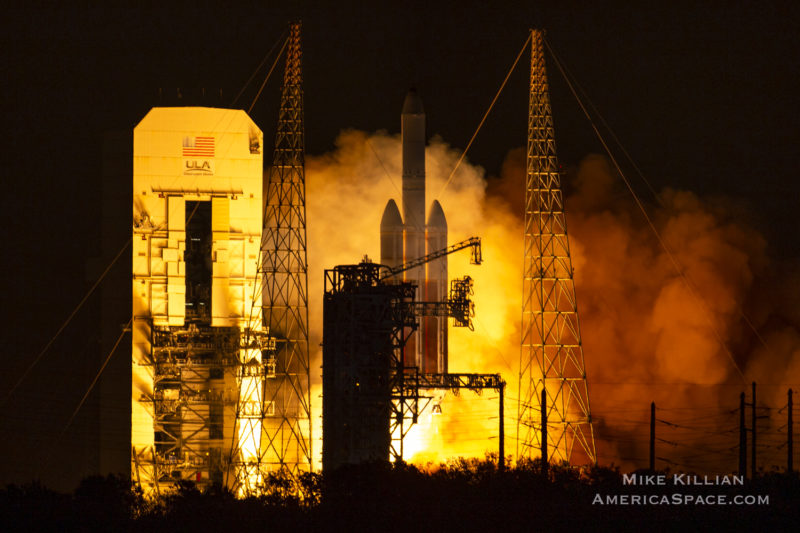
(...) As outlined in AmericaSpace’s NROL-44 preview article earlier this week, this mission has weathered no less than eight foiled launch attempts. The Delta IV Heavy was rolled out to the pad in November 2019, with an initial expectation that it would fly in June 2020. That date subsequently slid to 26 August, followed by an additional 24-hour delay at the request of NROL-44’s customer, the National Reconnaissance Office.
Another two-day postponement was forced by a ground pneumatic control system issue, before the Heavy endured a dramatic last-second Hot Fire Abort at T-3 seconds on the 29th. Four more attempts to get the snakebitten mission off the ground in late September also came to nought, thanks to the intractable Florida weather, a hydraulic issue with SLC-37B’s swing-arm system and another last-second pad abort.
Hopes of flying in late October were called off and the mission was officially declared “Indefinite on the Range” as ULA tended to a raft of technical issues. At length, on 4 December, it was announced that a revised launch attempt would be made on Thursday evening. Weather conditions were predicted to be 90-percent favorable, deteriorating slightly to 80 percent in the event of a scrub to Friday and 70 percent should the mission be put on hold until Saturday.
“Favorable weather is anticipated during Thursday evening’s launch attempt, with little concern of a weather-related violation,” noted the 45th Weather Squadron at Patrick Air Force Base in its L-1 update, issued Wednesday.
“High pressure will cross the state and push into the western Atlantic late in the week, resulting in gradually moderating temperatures and a very slow increase in moisture. Aside from scattered to broken low-level clouds, weather conditions are expected to remain generally favorable Friday, with only a small chance for the Cumulus Cloud Rule violation in the event of a 24-hour delay.”
Following a smooth Launch Readiness Review (LRR) on Wednesday, teams officially pressed ahead with Thursday’s launch attempt, aiming for T-0 at 6:15 p.m. EST. “No open issues, Pgo at 90 percent,” tweeted ULA CEO Tory Bruno, offering an encouraging perspective of no technical issues and a high probability of good weather.
Countdown operations began crisply at 9:45 a.m. Thursday with the power-up of the Heavy’s avionics and other critical systems. At 10:32 a.m., the 330-foot-tall (110-meter) Mobile Service Tower (MST) was jacked up by a few inches and began its slow rollback away from the rocket. Forty-seven minutes later, having moved at a glacial pace of just a quarter-mile-per-hour (0.4 km/h), the MST reached its launch position and was declared “hard-down” and secured in place.
But hopes of meeting the targeted 6:15 p.m. liftoff time evaporated, when ULA Launch Director Lou Mangieri instructed the launch team to co-ordinate a new T-0 for 8 p.m. EST. In the meantime, flight control systems aboard the 235-foot-tall (72-meter) rocket were initiated and systems were conditioned with gaseous nitrogen, ahead of fueling.
As if willing the long-delayed mission to finally fly, even Mother Nature came online, with Launch Weather Officer Will Ulrich declaring that the outlook had improved to 100 percent. At 3:35 p.m., the countdown emerged from the first of two 15-minute built-in holds, with a definitive “Go for Fueling” co-ordinated between Mr. Mangieri and ULA Launch Conductor Scott Barney. The Heavy’s liquid hydrogen storage tank was pressurized and high-pressure helium bottles on the three Common Booster Cores (CBCs) and the Delta Cryogenic Second Stage (DCSS) were charged.
Then, at 4 p.m., shortly before fueling was due to commence, came an anomaly in the form of an issue with the rocket’s hazardous gas detection system. The countdown clock was halted as the system was recalibrated. With the problem resolved, the clock started ticking again at 4:24 p.m. and Mr. Mangieri announced a revised T-0 of 8:09 p.m. Loading of the Heavy with over 440,000 pounds (200,000 kg) of liquid oxygen and hydrogen got underway shortly thereafter.
“Count is progressing cleanly,” tweeted Mr. Bruno. “The Majestic Delta IV Heavy is looking longingly to the heavens.”
Entering the countdown’s final pre-planned hold at T-4 minutes, more than two dozen engineers were polled by Mr. Barney for their readiness to support the launch. At length, Mr. Mangieri and NRO Mission Director Col. Chad Davis gave their permission to go. Clocks resumed counting at 8:05 p.m., with an ethereal quietness on the countdown net, as propellant tanks attained their proper flight levels and pressures. At T-80 seconds, the Heavy transitioned from ground power to internal power, its on-board ordnance was armed and its on-board flight software went active.
A final Status Check produced a definitive “Go” across the board and at T-14 seconds the pad-side Radial Outward Firing Igniters (ROFIs) came to life, glittering like sparklers to clear unburnt hydrogen from the vicinity of the RS-68A engines. After 13 months shackled to Earth, the roar of the Heavy—and its slightly disconcerting habit of seeming to set its insulation on fire at liftoff—woke anything still sleeping on the Space Coast with an unearthly 2.1 million pounds (1.1 million kg) of thrust.
It was the 12th launch of a Heavy since December 2004, marking the beginning of the end for an impressive rocket which has now lifted eight classified NRO payloads, NASA’s Parker Solar Probe, the final Defense Support Program (DSP) early-warning satellite and the inaugural voyage of the Orion deep-space exploration vehicle. But tonight’s mission with NROL-44, despite all the media attention it has received for the wrong reasons since August, is completely shrouded in mystery.
(...)
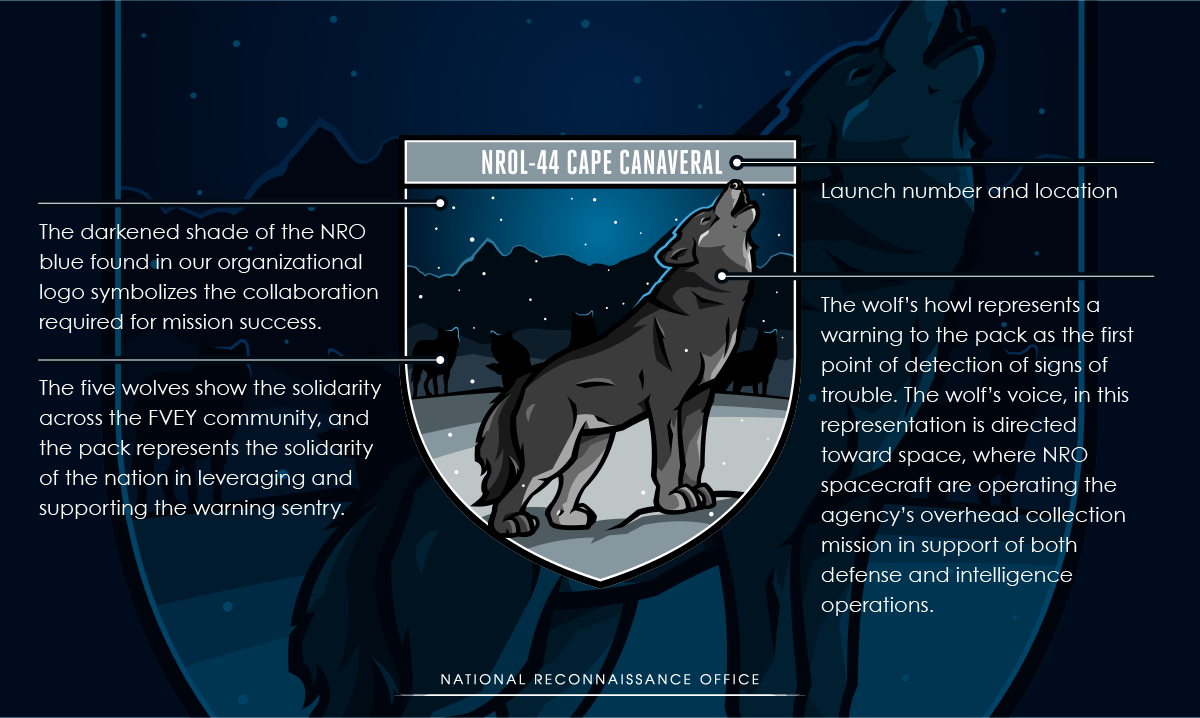 https://www.americaspace.com/2020/12/10/delta-iv-heavy-launches-long-delayed-nrol-44-mission/Delta 4-Heavy launches U.S. spy satellite after months of delays
https://www.americaspace.com/2020/12/10/delta-iv-heavy-launches-long-delayed-nrol-44-mission/Delta 4-Heavy launches U.S. spy satellite after months of delaysDecember 11, 2020 Stephen Clark
 A Delta 4-Heavy rocket lifts off Thursday night from Cape Canaveral Space Force Station. Credit: United Launch Alliance
A Delta 4-Heavy rocket lifts off Thursday night from Cape Canaveral Space Force Station. Credit: United Launch Alliance(...) The launcher’s payload shroud separated about six-and-a-half minutes into the mission. The rest of the launch sequence occurred in secret due to a government-imposed new blackout intended to keep certain mission details under wraps — a standard practice for missions with NRO satellites.
ULA’s live broadcast ended at that point, and the company remained silent about the progress of the multi-hour launch sequence until around 2:20 a.m. EST (0720 GMT) Friday, when ULA issued a press release confirming a successful conclusion to the Delta 4-Heavy mission. (...)
“We are honored to launch the first payload from the newly-renamed Cape Canaveral Space Force Station. I want to thank our mission partners for their collaboration and teamwork as we worked through technical challenges that culminated in the launch of this critical national security payload,” said Gary Wentz, ULA vice president of government and commercial programs.
The Florida launch base, formerly known as Cape Canaveral Air Force Station, was officially renamed Wednesday during a visit by Vice President Mike Pence. Nearby Patrick Air Force Base was also renamed as Patrick Space Force Base, and the two facilities are the first in the Defense Department to get a new Space Force designation.
The new names reflect the next step in the evolution of the U.S. Space Force, which was established nearly a year ago to take over most of the Air Force’s space operations.
“The Delta 4-Heavy again demonstrated its success as the nation’s proven heavy lift vehicle, through its unique capability to deliver this mission to orbit due to a combination of performance and fairing size,” Wentz said in a statement.
The NRO published no details about the payload on the Delta 4-Heavy mission, which officials designated NROL-44.
But independent analysts say publicly-known parameters such as the rocket’s capabilities, its launch azimuth, and the launch window suggested the Delta 4-Heavy was carrying a signals intelligence satellite into geosynchronous orbit more than 22,000 miles (nearly 36,000 kilometers) above Earth and closely hugging the equator.
Reaching such an orbit required the rocket to follow one of the most challenging flight profiles in the launch business, with three burns expected by the Delta’s upper stage to deploy its satellite payload at the targeted altitude. (...)
But the satellite is likely related to the NRO’s fleet of “Advanced Orion” or “Mentor” signals intelligence stations flying in equatorial geosynchronous orbits. The Advanced Orion-series satellites began launching on Titan 4 rockets in 1995, following a pair of earlier NRO Orion payloads that launched in the 1980s on space shuttle missions.
https://spaceflightnow.com/2020/12/11/delta-4-heavy-launches-u-s-spy-satellite-after-months-of-delays/Photos: Delta 4-Heavy rocket lights up Cape CanaveralDecember 15, 2020 Stephen Clark
 Credit: Alex Polimeni / Spaceflight Nowhttps://spaceflightnow.com/2020/12/15/photos-delta-4-heavy-lights-up-cape-canaveral/https://www.nasaspaceflight.com/2020/12/ula-nrol-44-delta-iv-heavy/
Credit: Alex Polimeni / Spaceflight Nowhttps://spaceflightnow.com/2020/12/15/photos-delta-4-heavy-lights-up-cape-canaveral/https://www.nasaspaceflight.com/2020/12/ula-nrol-44-delta-iv-heavy/Orion 10 (USA 311, NROL 44)
https://space.skyrocket.de/doc_sdat/orion-5_nro.htmhttps://www.nasaspaceflight.com/2020/12/ula-nrol-44-delta-iv-heavy/